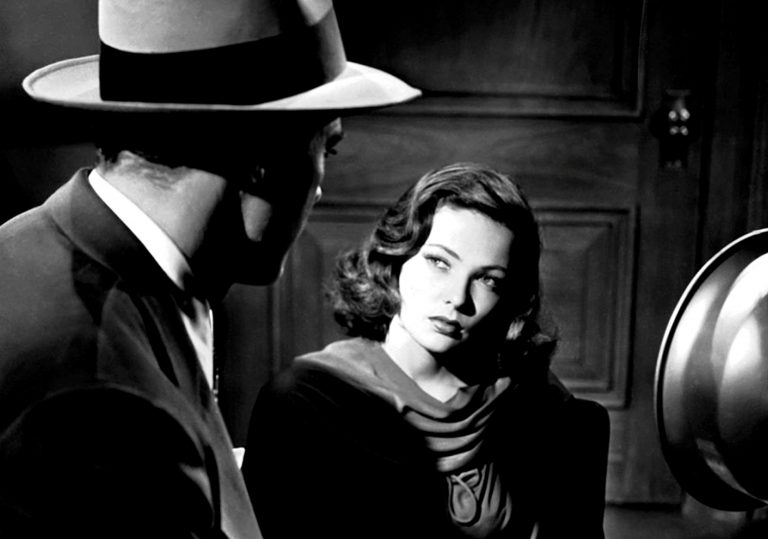Caspary was invested in the character because she’d modeled Laura’s personality on her own. She was a “career girl” avant la lettre and never seems to have pictured or wished herself otherwise. Born to bourgeois Jewish parents in Chicago in 1899, she went out to work almost as soon as she turned eighteen and rarely stopped churning out copy from that day until she died. There was no college and no finishing school, no slow courtship of traditional critical respect. She had to make a living, so she wrote.
Her first jobs had her writing the materials for scam correspondence courses on everything from ballet to salesmanship to screenplay writing. She did a little journalism, of the “RAT BITES SLEEPING CHILD!” sort, but credited a job at the Trianon ballroom in Chicago with opening her mind to experiences not her own. “I became both editor and staff of Trianon Topics,” she explained, “an eight-page tabloid-sized weekly devoted to clean dancing.” She worked the way most journalists once did: she hung around, talking to every sort of person who came through the place. And though she could not print scandals, she found that “through the gathering of inane and trivial news I was educated and profoundly changed.”[...]
For all that, something seems to have gotten lost when the author tried to channel her own spirit into Laura. The fictional character is less direct and less charismatic than her creator. The genius of the novel, the thing that hooked Preminger and had studio executives begging Caspary, for the rest of her life, to write another like it, was another character: Waldo Lydecker, Laura’s sometime mentor and friend.
Lydecker is the sort of man who refers casually to “Roberto, my Filipino manservant.” A newspaper columnist by trade, he is corpulent and arrogant. He is not afraid to tell his readers that he hates mystery stories, finds them flat and unappealing. “I offer the narrative,” he declares, “not so much as a detective yarn as a love story.” That, right there, is the siren song of the unreliable narrator, and also of a type: the predatory, cosmopolitan, maybe gay (but maybe not) villain.
In the film, Lydecker is played by Clifton Webb, who was not obese, but otherwise fit the bill nicely. (Webb was also fairly openly gay, at least to those in the know in Hollywood.) Preminger claimed that the character was truly authored not by Caspary but by the last screenwriter on the project, Samuel Hoffenstein, who had the actor in mind: “Hoffenstein practically created the character of Waldo Lydecker for Clifton Webb,” he said.
Actually, the recipe was not so simple. It is generally assumed that Lydecker was based on Alexander Woollcott, the theatre critic who wrote “Shouts and Murmurs” for The New Yorker and started the Algonquin Round Table. Woollcott was quite large and gay and could have been described as pretentious (he allegedly described himself as such on one occasion). Caspary undoubtedly knew of him, as she knew other members of his set. Her name sometimes appeared in Franklin Pierce Adams’s gossip columns; she wrote some light items for this magazine.
But there is another source for the character. The writing of “Laura” was a kind of accident, done for money. Caspary did not like murder mysteries herself, and she saw in them a structural flaw. “The murderer, the most interesting character,” she wrote, “has always to be on the periphery of action lest he give away the secret that can be revealed only in the final pages.” If she was going to write one, she decided she needed to do it differently.
A friend suggested she read Wilkie Collins’s “The Woman in White” and try out his manner of using the voices of several characters to weave the story. It worked, not least because she found inspiration for Lydecker’s type in Collins’s villainous, obese Count Fosco. “Crime is in this country what crime is in other countries—a good friend to a man and to those about him, as often as it is his enemy,” Fosco declares in that book.
Lydecker’s genealogy is of more than academic interest. Caspary and Preminger can be seen to occupy the roles of the characters she created. There she was, a capable woman of few artistic pretensions, trying to get ahead in the world. There he was, physically imposing and convinced of his own gifts, wanting to possess her story in order to claim a certain amount of its authorship for himself. And, in a way, unlike Lydecker, Preminger succeeded: far more people know his film now than have read her novel. Perhaps that is the one way in which Vera Caspary can be called a victim. (Read more.)
A review of Laura is HERE.
Share




















No comments:
Post a Comment